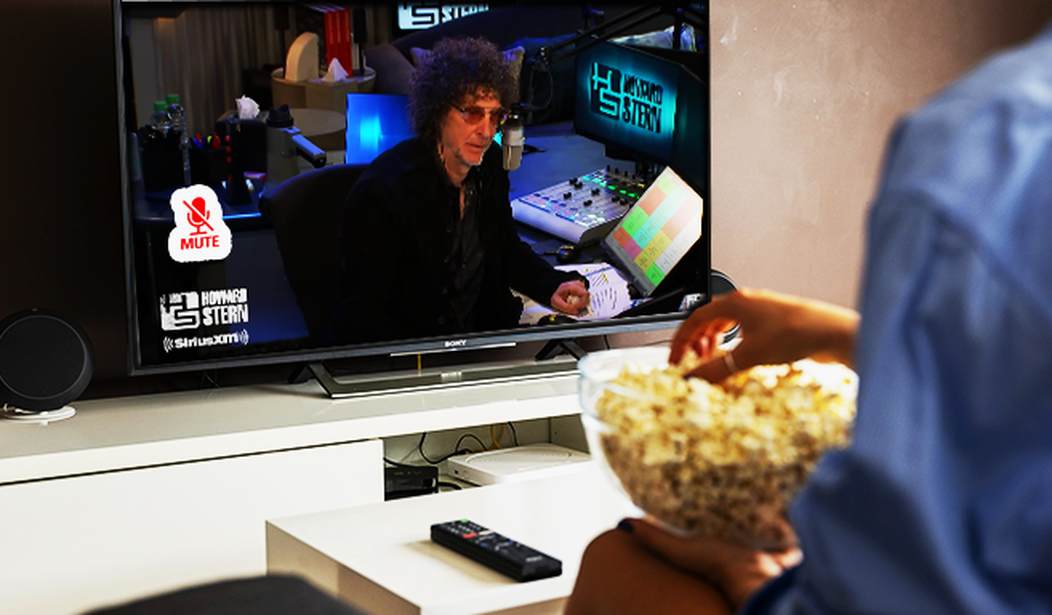When it comes to artists and artwork, how do you determine who’s number one? By its very nature, art is subjective. It can’t be definitively quantified. It’s not like you can award a Picasso a 9, a Dali an 8, and a Van Gogh a 7. One man’s masterpiece is another man’s abomination; beauty is, was, and will forever be in the eye of the beholder.
But there is one metric that does govern art: cold, hard cash. You might not be able to quantify which artists had the prettiest brushstrokes or painted the “best” pictures, but you can certainly see which painting sold for the most money.
If money’s your metric, then Howard Stern is the most successful radio personality in American media history. If you consider radio a creative art, then he’s the world’s wealthiest artist. He’s been compensated more money than anyone else in his medium — and by a VERY wide margin.
He makes $130 million annually from Sirius and has a net worth of $900 million. He owns a pair of apartment buildings in New York, 32 villas and properties in Minnesota, Texas, and Virginia, 16 mansions in Florida and California, and over 5,000 acres of real estate. His enormous mega-mansion in Palm Beach, Fla., is estimated to be worth $300 million. (A nearby property in Palm Beach — Mar-a-Lago — was appraised by New York Attorney General Leita James to be worth just $75 million.)
Stern has made more than Rush Limbaugh. More than Hannity, Beck, Imus, and Schlessinger combined. No radio talent has ever matched his checkbook.
For a time, he was so omnipresent in popular culture, that an article like this would never see the light of day. First of all, the premise alone would be preposterous — how the hell is Howard Stern irrelevant?! He’s everywhere! And second, journalists were terrified of Stern. If he turned his spotlight on you, it was brutal: His insanely loyal fans would terrorize you in public. Go ask Kathie Lee Gifford how fun it was to be caught in Stern’s crosshairs.
And really, that was the secret to his success: More than anything else, it was the connection Stern forged with his audience that made him so special. If he had an autograph signing or an appearance somewhere, thousands of his fans would huddle together in the pouring rain — waiting for hours — just to get a glimpse of their radio deity. His book “Private Parts” became the biggest literary smash-hit Simon & Schuster had ever published. His audience hung on to his every word. The emotional bond between him and his audience was unbreakable.
Or so we thought.
Then something strange happened: Howard Stern became the world’s first celebrity to go behind a paywall.
It was a clever move by Sirius: For satellite radio to succeed, they needed to figure out a way to convince audiences to pay for something that they’re accustomed to getting for free. So, if you’re Sirius, what’s the fastest, most efficient way to build a paying audience?
Answer: Find the biggest name in the talk-radio universe with the most loyal audience — fans so faithful, they’ll follow him anywhere — and sign him to an exclusive contract.
And that’s exactly what Sirius did. Stern left terrestrial radio and jumped to satellite in 2006.
Originally, this was pitched to his fans as an amazing new development for creative content: Before, Stern was limited by the FCC. Now, he’s finally free to do the show he’s always wanted to do — it’ll be wilder, crazier, and waaaay more explicit! Oh, can you imagine the antics Stern might pull without any risk of censorship?!
In his first few years at Sirius, Stern was hitting on every cylinder. Those shows were some of the finest of his career: Artie Lange, Eric the Actor (“Ack, ack”), Beetlejuice, Riley Martin, and their merry gang of goofy Wack Packers were skewering sacred cows and delighting millions of ultra-dedicated fans. Back then, when you walked around an office building, you’d usually find multiple people tuning to Stern over the Internet while wearing headphones (or hiding in the parking lot, listening to their Sirius radio), giggling and laughing.
And now?
Nobody under 40 listens to Stern. Nobody under 30 knows could even identify him in a lineup. But whereas older Americans — Gen X-ers and up — still remember Stern as a pioneering shock jock, younger Americans don’t remember him at all.
It’s like he never existed.
If PJ Media’s target audience were Gen Z-ers, there’s no way I could write this article. Nobody would care enough to click on it.
But there’s a fascinating story lurking beneath the surface: By becoming the first A-Lister to trade his mainstream visibility for a big, fat payday, Stern became a case study on celebrity paywalls.
Rush Limbaugh never did it, although he certainly had ample opportunities: His fans were crazy-loyal, too. But Limbaugh rejected satellite offers because he still wanted to reach the largest audience possible. He already had enough money for dozens of lifetimes; what he truly cared about was the growth of his show and the future of our country. El Rushbo understood that his social impact would’ve been dramatically diminished if he retreated behind a paywall. Up until Limbaugh’s final days, it was always important to him for his audience numbers to be strong.
Howard Stern still cares about numbers, but not the number of listeners: He cares about the number of zeroes at the end of his bank account. When it comes to money, he cares a lot. But his audience no longer cares about him.
Related: If You Want to Know How the Devil Would Market Politics and Religion, I'm Your Guy.
As it turns out, when an A-List celebrity swaps reach for the riches of a paywall, their celebrity status is frozen in time. The biggest they’ll ever be is the day you sign them to a subscription service.
And each day after that, they lose a little bit more equity. After a while, they’re no longer an A-Lister.
Howard Stern made his Sirius radio debut on Jan. 9, 2006 — nearly 20 years ago. That’s an awful long time to hide behind a paywall. One by one, his listeners had enough and left (or were alienated by Stern’s “evolution” to more left-leaning content), and without the free exposure from terrestrial radio, he lacked the ability to cultivate new ones. So each year, he fades a little more.
It’s an important business lesson. When I joined the PR world, what surprised me the most was that, in PR agencies, the most important job wasn’t actually doing the PR work. It’s landing new clients.
But when you stop and think, it really does make sense: Even if a PR agency does amazing work, people retire. Financial strategies change. Companies go bankrupt. There’s always attrition. So you need a feeder system to stay relevant. If you’re not actively landing new clients, your business is probably dying.
And if you’re not careful, you’ll be as irrelevant and dead to the world as Howard Stern.










Join the conversation as a VIP Member